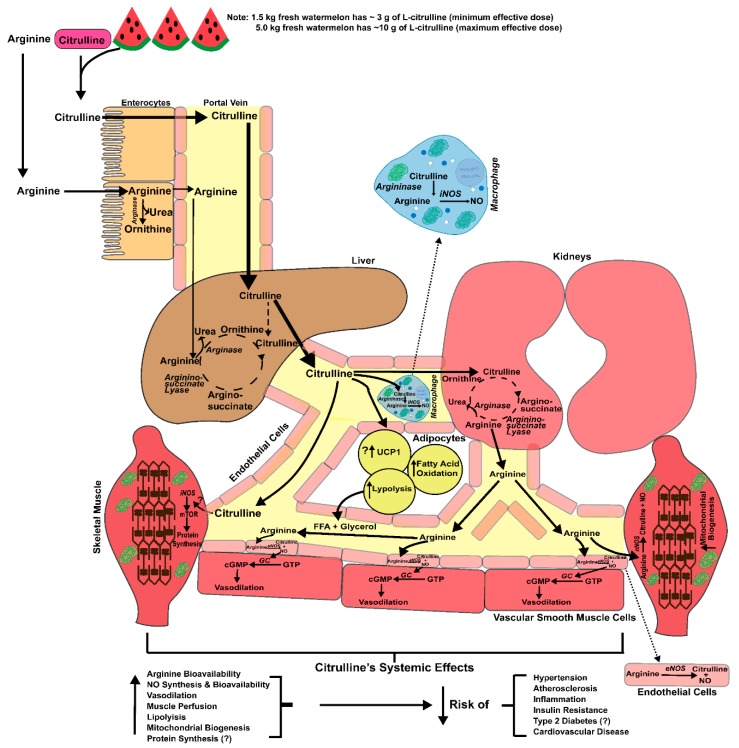Figure 1.
Comparison of oral l-citrulline (via pharmaceutical/nutraceutical grade l-citrulline or watermelon products) versus oral l-arginine. The activity of the arginase enzyme located in the enterocytes of intestines and liver (first-pass extraction) substantially reduces the availability of oral l-arginine, instead yielding increased urea and l-ornithine production. l-citrulline is not acted on by arginase enzyme or first-pass extraction but is converted to l-arginine by argininosuccinate lyase in the kidneys. Increased circulating l-arginine serves a substrate for the eNOS to produce nitric oxide (NO) and increase smooth muscle vasodilation. l-citrulline may directly activate inducible nitric oxide synthase (iNOS) in skeletal muscle and increase protein synthesis via mTOR activation. l-citrulline may indirectly activate neuronal nitric oxide synthase (nNOS) in skeletal muscle leading to increases in NO and stimulation of mitochondrial biogenesis. l-citrulline has reported actions on adipose tissue to increase lipolysis, fatty acid oxidation, and uncoupling protein 1 (UCP1) expression. l-citrulline has also been reported to indirectly activate iNOS in activated macrophages and increase NO production. l-citrulline’s systemic effects positively impact hypertension, atherosclerosis, inflammation, insulin resistance, type 2 diabetes, and cardiovascular disease. Emerging evidence also suggests that l -citrulline itself can positively impact skeletal muscle and adipose tissue to improve metabolic syndrome. This figure was partially modified from Irving and Spielmann (2016) [13].

